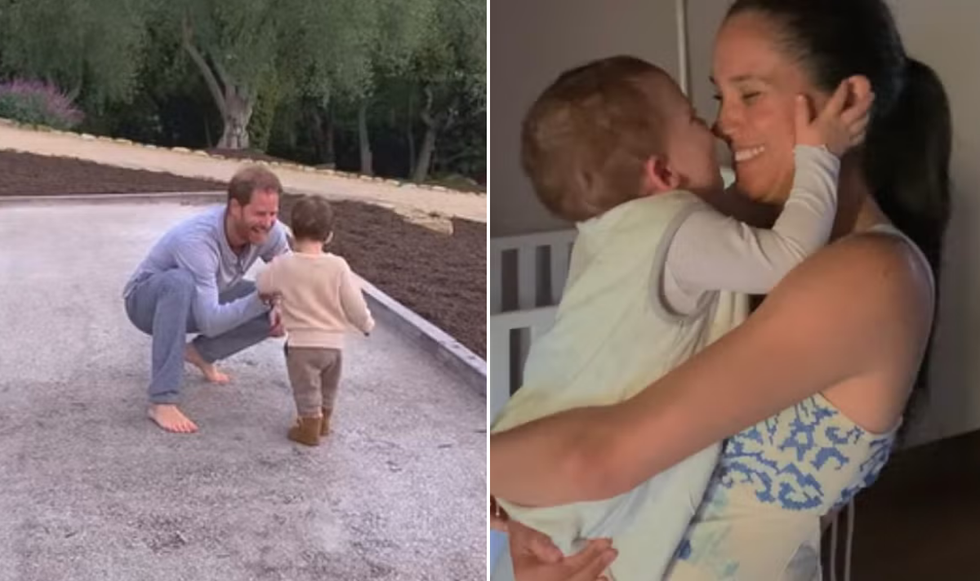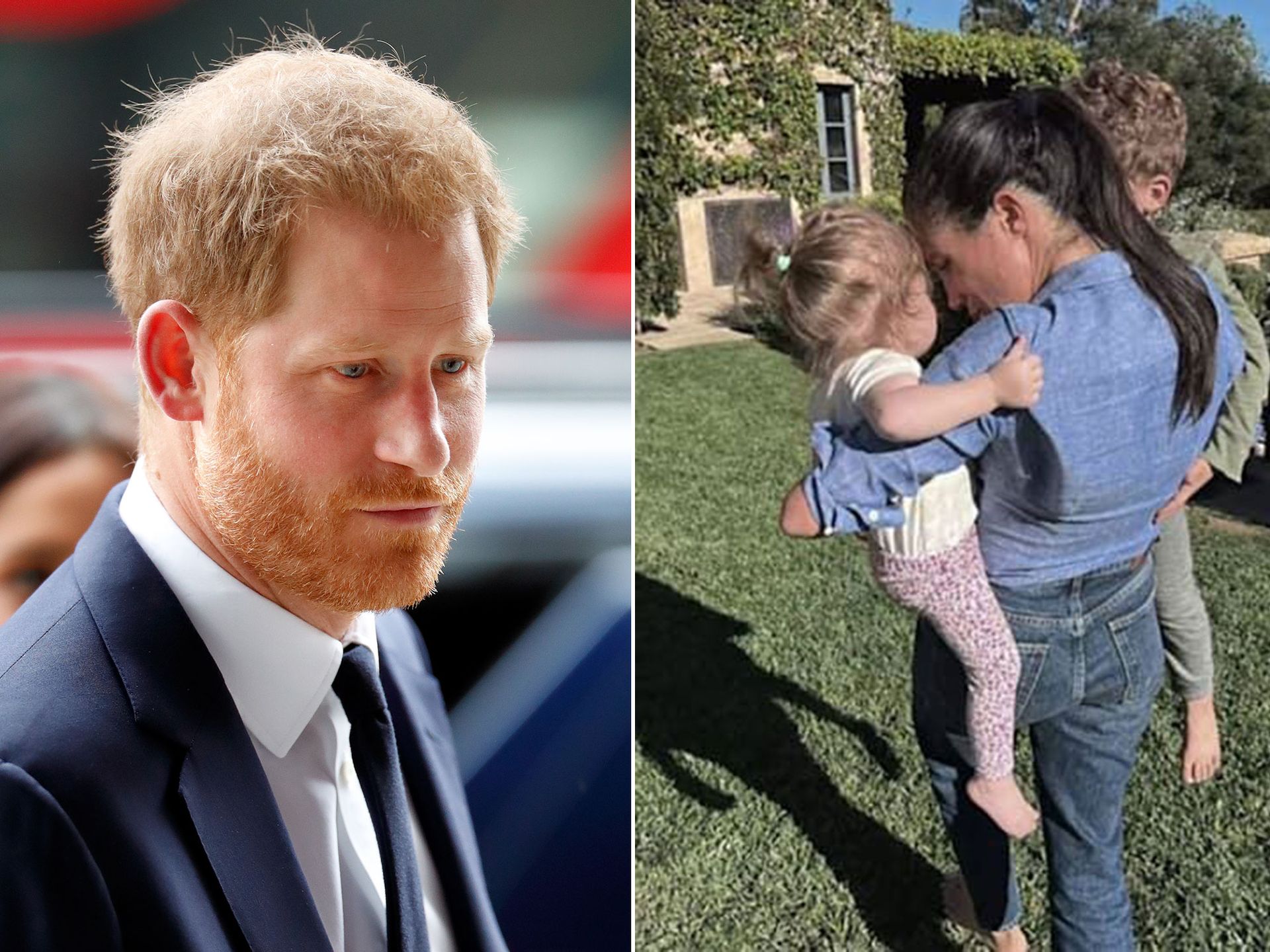In recent years, Prince Harry and Meghan Markle have drawn significant attention from royal watchers, entertainment media, and the general public. Ever since their marriage in 2018, curiosity about the couple has mounted, fueled by their sometimes unconventional decisions regarding where they live, how they handle press coverage, and how they raise their children, Archie and Lilibet. While the Duke and Duchess of Sussex have repeatedly expressed a desire to live a more private life, their status as prominent figures—and their periodic public statements—continue to spark vigorous debate and speculation.
The Public’s Fascination with Archie and Lilibet
From the moment Meghan Markle’s first pregnancy was announced, the public took an immediate interest in every detail, from the timing of Archie’s birth to the baby’s christening photos. Royal births have traditionally been occasions for open celebration, featuring official announcements, scheduled photo calls, and extended coverage in the British press. Many watchers anticipated something similar for the Sussexes’ children; after all, royal traditions had historically encouraged transparency about the arrivals of new heirs and spares alike.
However, Harry and Meghan often chose to deviate from well-trodden paths. Archie Harrison Mountbatten-Windsor’s christening, for example, was largely kept private. When photos did eventually emerge, they were few in number—just enough to satisfy some curiosity, though still leaving a sense of mystery. Over time, that mystery led to heightened speculation. Social media platforms buzzed with unconfirmed theories: some questioned whether Meghan had actually carried Archie, while others wondered if the couple’s reasons for secrecy hinted at deeper complications. The palace, for its part, did not provide elaborate explanations, reinforcing Harry and Meghan’s clear stance that aspects of their family life would not follow established royal norms.
_updates.jpg)
Addressing the Surrogacy Theories and “Fake Bump” Rumors
Among the more persistent rumors that have circulated on certain online forums is the suggestion that Meghan Markle used a surrogate for one or both of her pregnancies. Some individuals pointed to fleeting footage or photographs where they claimed Meghan’s baby bump looked inconsistent, particularly when she would change positions or wear certain styles of attire. Others speculated that the Duchess’s father had made claims about her health, exacerbating the chatter.
Despite these rumors, there is no credible evidence supporting the notion that Meghan’s pregnancies were anything but genuine. The stories of “prosthetic bumps” and “slipping belly” have not been substantiated by any official source, nor are they supported by medical records or recognized publications. Buckingham Palace and the Sussexes themselves have never endorsed or confirmed such speculation. In fact, mainstream media outlets, along with a number of royal commentators, have repeatedly emphasized that claims about a “fake pregnancy” or surrogacy arrangement are baseless.
Choosing Privacy Over Pageantry
The unique path the Duke and Duchess have taken can be partially explained by their stated wish for a more tranquil home life. They relocated to North America, first spending time in Canada and then settling in California. Their Montecito residence, surrounded by gated communities and far from the traditional grandeur of royal palaces, suggests a commitment to forging a life that is largely out of the public eye.
This desire for privacy has led them to break with conventions that have long defined royal child-rearing. Past generations of royals typically allowed the media occasional access, from official family portraits to glimpses of day-to-day life. Such openness was seen as a public duty, given that the monarchy is partly maintained by taxpayer funds. Harry and Meghan, however, stepped back from full-time royal duties in 2020, which changed their formal obligations to the Crown. No longer considered “working royals,” they now rely less on public funding, freeing them from many of the traditions associated with showcasing royal children.

The Question of Christening Details and Birth Certificates
One of the controversies that continues to swirl around the Sussexes’ family life concerns their children’s christening details or their birth certificates. Typically, royal fans are used to receiving official announcements that include the location of the birth, the officiating clergy for the christening, and comprehensive family portraits. With Archie and Lilibet, the couple released only selected tidbits, choosing to omit or minimize certain data—like the names of the officiating physicians or the location of the ceremony. The reasoning, in their view, is consistent with keeping their children out of the public’s glare. Critics argue it breaks centuries of tradition and fosters an air of unnecessary secrecy.
Still, Harry and Meghan have explained that their protective approach toward Archie and Lilibet stems from their experiences with relentless media scrutiny. The couple has openly cited the well-documented pressures of life in the spotlight, especially given Harry’s personal history. He has often shared how deeply his mother’s experiences with invasive paparazzi affected him. For Harry, it appears paramount to shield his children from a fate akin to what Princess Diana endured. In interviews, he has indicated a strong resolve to raise Archie and Lilibet on terms that reduce exposure to constant tabloid coverage.

Parenting Choices and Mental Health Advocacy
Another area of discussion centers on how involved Harry and Meghan actually are in day-to-day parenting, especially given their busy schedules, media ventures, and philanthropic commitments. Harry’s advocacy for mental health has been widely publicized, and the couple’s Archewell Foundation has undertaken various projects aimed at supporting social justice, community well-being, and charitable causes around the world. For critics, the question is whether they devote enough personal time to their children, or if nannies and staff fill the void. Skeptics point to moments when Harry was spotted at events soon after a birth, or mention allegations—completely unverified—regarding the family’s lifestyle. Such anecdotes are often taken out of context or never confirmed by reputable sources.
In truth, the public sees only a fraction of how the Sussexes live behind closed doors. While fans and critics alike might wish for more transparency, it remains the couple’s prerogative to determine how much to share. What is clear is that both Harry and Meghan have spoken passionately about mental health—Harry, in particular, drawing on personal hardships. Whether one agrees with their methods or not, their message about well-being, therapy, and self-care resonates with many, reflecting a more modern approach to personal health than what earlier generations of royals typically displayed.
Continual Scrutiny and the Role of Rumors
Many of the rumors—ranging from those about Meghan’s family relationships to doubts about Archie’s lineage—arise and persist because of the couple’s guarded posture. As with any high-profile figures, especially those who depart from tradition, speculation fills the vacuum left by limited official information. The internet’s echo chambers can exacerbate this, where an unsubstantiated claim can quickly spiral into a widely discussed conspiracy theory.
Moreover, some segments of the media thrive on sensational headlines, especially where British royalty is concerned. Over time, these narratives gain momentum, causing frustration not only for Harry and Meghan, who must continually refute or disregard them, but also for royal enthusiasts who find the swirling rumors both exhausting and confusing. For every new photo shared or every interview given, lines are drawn between those who see authenticity and those who see cunning manipulation.

Reflecting on the Sussexes’ Relationship with the Monarchy
Harry and Meghan’s decision to step back from senior royal duties was monumental. It has left them in an ambiguous position: They retain their titles as the Duke and Duchess of Sussex, but they no longer operate under the traditional mechanisms of royal protocol. This makes some wonder if or how their children might engage with the royal family as they grow older. Additionally, questions about line of succession occasionally surface among curious onlookers, especially since Archie and Lilibet technically remain in the order of inheritance to the British throne.
Though some observers doubt whether Archie and Lilibet will maintain any practical royal role, others believe the children could re-engage with royal traditions someday, particularly if the broader monarchy evolves to accommodate them. It’s also conceivable they may lead lives almost entirely outside of the typical royal spotlight. For now, the family’s choices—rooted in the desire for autonomy—suggest that any interaction with the monarchy will be on the Sussexes’ terms.

The Ongoing Saga and Looking Ahead
The narrative surrounding Harry, Meghan, and their children is far from complete. As Archie and Lilibet grow older, the public’s curiosity may shift focus to their education, personalities, and whether they make appearances at key royal events, such as coronations or significant family celebrations. Much may depend on the evolving dynamics within the royal family itself—particularly how King Charles III or Prince William might choose to acknowledge Harry’s place within the institution.
For the Duke and Duchess, the future likely holds an ongoing balancing act. On one hand, they will want to control what is shared about their family, exercising their right to privacy; on the other, their high profiles and philanthropic work ensure that external interest will remain intense. Even their critics concede that Harry and Meghan have effectively charted a new path for modern royals who seek a blend of public influence and private life.
Ultimately, the question of whether the couple will satisfy the public’s hunger for more “traditional” royal transparency remains unanswered. One thing is certain: the discussions—often marked by rampant speculation and emotional fervor—show no signs of abating. Fans continue to champion the pair for forging a more individualistic family identity, while skeptics remain unconvinced about their motives or sincerity. For better or worse, the story of the Sussex family’s break from convention, including the birth and upbringing of Archie and Lilibet, has redefined what it means to be a member of the British Royal Family in the 21st century. And as long as curiosity lingers, the chatter around their choices will continue, shaping how the world perceives this distinctive royal branch for years to come.
